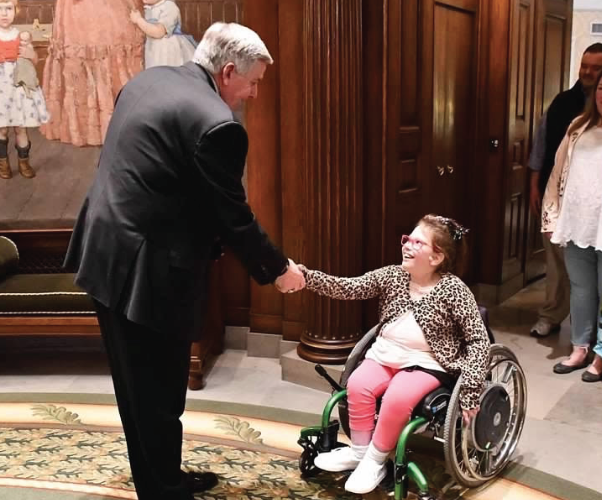Guest Blog: Why we need to fund students instead of systems
This is part of our ongoing series of guest blogs from our highly-engaged advocates. In this blog, public school teacher Becki Uccello talks about why a private school is the right fit for her daughter and why we need to change education funding to focus on students and not systems. Keep an eye out for future guest blogs from some of our other key advocates.
As I have become more involved in the discussion of school choice, I have caught on to certain catch phrases. One of those is from Corey DeAngelis: “Fund students instead of systems.” This is simple yet powerful. Let me walk you through some scenarios that have affected our family.

Our daughter Izabella uses a wheelchair. Between the ages of 3 and 6, she attended Early Intervention preschool at our neighborhood elementary school. It was inclusive. The class was a mix of typical and non typical peers. The teachers and paraprofessionals treated the students like a family unit. It was a great experience. When it came time for the transitional meeting because Izzi was going to kindergarten, we had several questions about inclusion. None could be answered because those questions were for the “elementary side” of things. They told us that early intervention and elementary had two different administrations and two different budgets, and there would be no mixing of the two. We were kind of surprised, just because we figured that since our daughter would be in that particular building for seven years, we could discuss how inclusion would affect her educational journey.
We quickly found out that as inclusive as her preschool experience was, her kindergarten experience was the opposite. She was pulled out of her general classroom more often than we had agreed to. When we met her speech pathologist, the first thing out of her mouth was, “What is Izzi’s Medicaid number?” Izzi had adaptive PE. One would think that this meant the PE class would do things that could include her. Instead, she was one on one with the adaptive PE coach.
Izzi’s kindergarten teacher continued to refer her to occupational therapy. Her reason: “Izzi doesn’t write dark enough with her pencil.” I asked if she could use a marker or something similar. The teacher’s response: “She needs to learn now how to darken circles for standardized testing.” And that is when I realized that this was not about what was best for our daughter. It was all about conforming her to the system.
When we brought up that the elementary playground was inaccessible, we were told that Izzi could play in the grass with bean bag games. She wanted to play basketball with her classmates, but the only way onto the court was via 3 steps. There was no ramp to the playground. Izzi’s wheelchair cannot roll through tire chips. We offered suggestions as to how to modify the playground. “We can’t change the whole playground for just one student,” we were told. Again, it was about the system, not the student.
As a public school teacher for 24 years, I have witnessed how the educational system is not necessarily about the students. Many students who qualify for special education services are in the same room all day. They are not always included with typical students, even in seemingly inclusive activities like PE and lunch.
More recently, I have watched legislation in Missouri concerning homeschool students and their participation in public school activities and sports. Opponents of this legislation don’t think it is “fair” for homeschool students to use public school opportunities because they are not part of the school system. Yet parents’ tax dollars fund the system.
It is past time for our state to fund students and what their best educational opportunities are.
« Previous Post: DESE releases new way to see school district data
» Next Post: North County parent talks about the need for education options